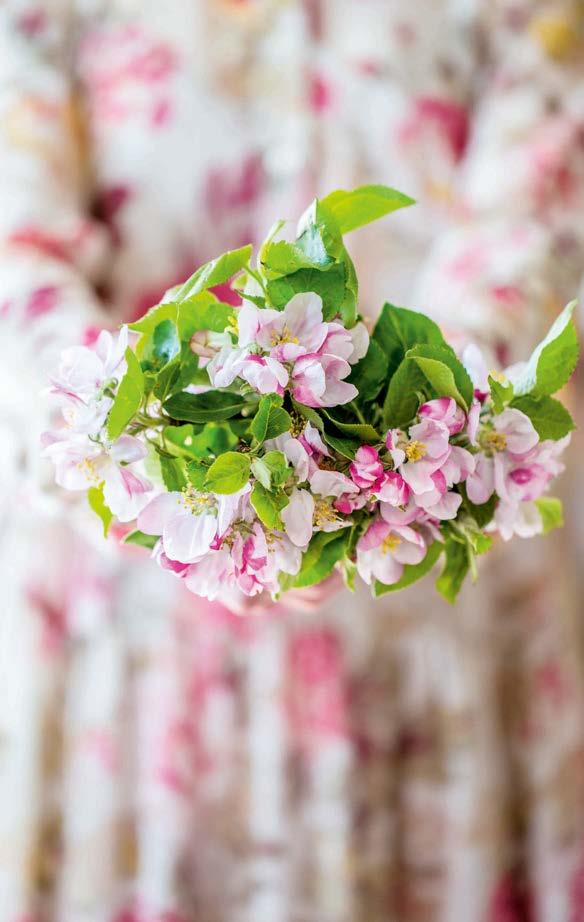
6 minute read
our Editor. READER TRAVEL OFFER A tailor-made luxury
TYPES OF GARDEN ROOMS
CONSERVATORY A conservatory should be predominantly glazed with over 75 per cent of the roof glazed, and a delicate frame – whether timber, metal or UPVC.
ORANGERY An orangery is a more substantial structure than a conservatory having pilasters, an inset roof and less glazing.
GREENHOUSE Designed for growing plants, these structures are single glazed. They can be freestanding in a desired spot in the garden – ideally near a vegetable patch or kitchen garden, but can be abutted to the house and have sliding doors adjoining the home for easy access.
GARDEN ROOMS A separate structure built in the garden – this could house a sitting room for teenagers, provide a home office, a gym or a place for pastimes, from art to music.
As with any external addition or garden structure, ensure if planning permission is needed. Most conservatories, provided they fall under certain conditions, will not require permission, but orangeries and other extensions may. Check with the local planning authority on gov.uk
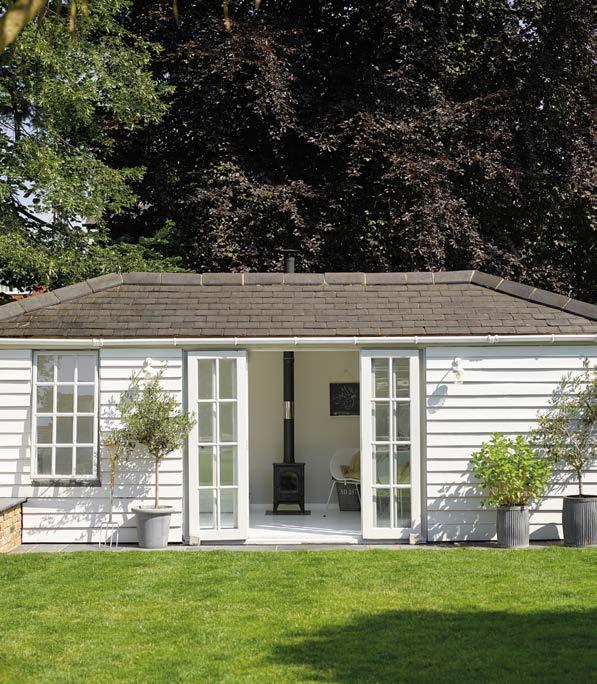
Style Notes
• Curtains can be used for winter warmth and privacy • Specialist blind treatments create shade when needed • Hard flooring is most practical but add rugs in natural materials for softness • Glass lampshades will make lights twinkle and gleam
ABOVE A separate garden room can provide an additional space for work, relaxing, or entertaining. Painted in Pure Brilliant White, from £17 for 750ml 10-Year Exterior Satin, Sandtex
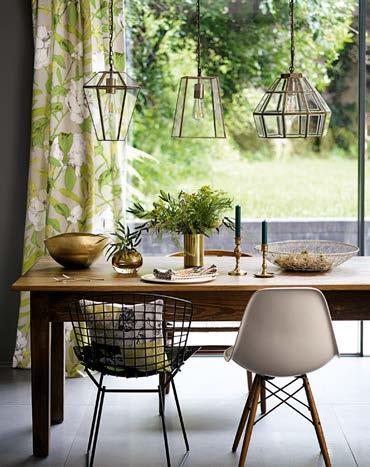
ABOVE Add a contemporary feel with glass and brass pendants. Pendant lights, from £72, Pooky RIGHT Roman blinds provide adjustable shade and privacy in a sunny, glazed room. Roman Blinds, from £72.55 each, English Blinds This greenhouse by Hartley Botanic is easy to access from the house and provides a warm, sheltered spot for a morning cup of tea.
LEFT Braid is used here to add a tailored finish to walls in different finishes in this scheme by interior design studio Gunter & Co.
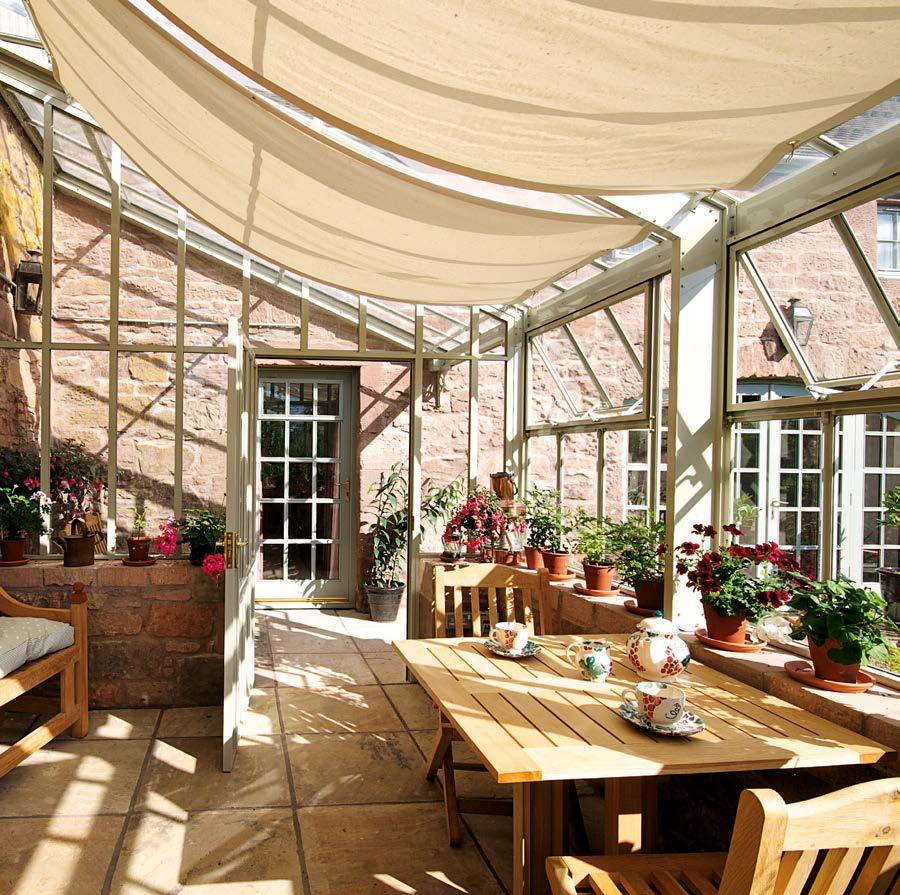
YEAR-ROUND COMFORT
A garden room is naturally at its best when flooded with sunlight. But at the hottest times of the day or year, so much glazing can sometimes make them too warm, and simply being outside can be better. Alitex’s John Lawson notes that garden rooms, particularly greenhouses, are best enjoyed in spring and autumn “when the temperature is ideal for creating a warm space in which to escape the rest of the house for a coffee, to read the paper or even to exercise.”
Though greenhouses might be a little too cool in winter, a heated conservatory can be enjoyed throughout the year. The obvious attraction of a conservatory is the view outside, but in the cooler months or as evening falls, some window treatments might be desirable. Even in summer, it can be good to have a way of creating some shade. Blinds are the classic choice, and many companies offer specialist, flexible treatments for glazed roofs and walls. For a more gentle mood, voiles and sheers might soften harsh sunlight, whilst traditional curtains in heavier-weight textiles will provide comfort and warmth for a room used in winter – whether as an additional sitting or dining room, or a snug for watching television. Katharine Pooley notes that other additions can make the space useable year-round. “A log-burning stove can add a touch of comfort – perfect for warming up in the colder months, as well as giving the room a unique focal point,” she suggests. “Utilise throws and blankets as well for a subtle winter update to create an inviting snug.”
Lighting is also important for a room used in winter or in the evening. A beautiful chandelier can be the perfect choice, as it will catch the light and twinkle during the day – or opt for simple glass pendants. “Consider table lamps for a gentle glow,” Pooley suggests, “or if you choose a ceiling light, install a dimmer switch to create some more ambience.”
Emma Sims-Hilditch says that on some projects she has installed floor lighting leading from the garden room to the ourside to create an illusion of outdoorindoor living. “On one recent project,” she adds, “where the conservatory was to be used as an additional living room, we wanted to avoid a ‘glass box’ look. So we introduced textured rough boarding to the walls. Combining this with heavy weighted linen on the sofa, velvet cushions and a chunky woven wool rug, made the room a welcoming space in which to relax and enjoy the garden views beyond.”
On a practical note, garden room flooring needs to work year-round, connecting indoors and outdoors. Hard flooring – whether marble, wood or tiles – is the most practical option for footfall from outside and is easy to clean. A rug can be used to add interest and comfort underfoot, perhaps something made from natural fibres such as jute or seagrass to complement a natural or botanical theme.
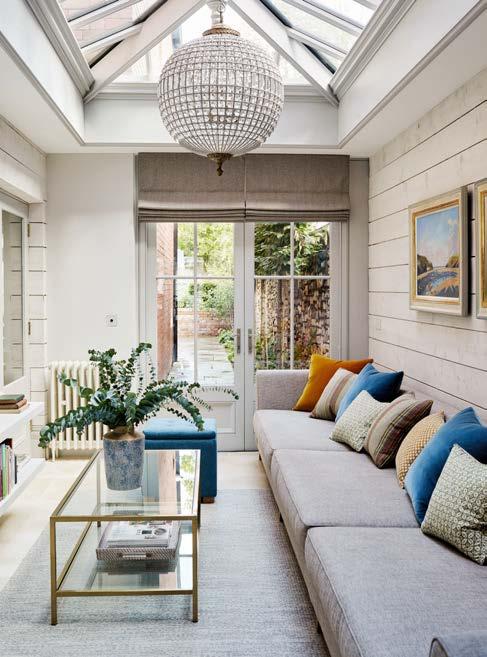
ABOVE Interior designer Emma Sims-Hilditch uses linen, wool, velvet and a crystal chandelier to make this a space to be enjoyed in cooler months too. BELOW A modern garden room by Garden Retreats.
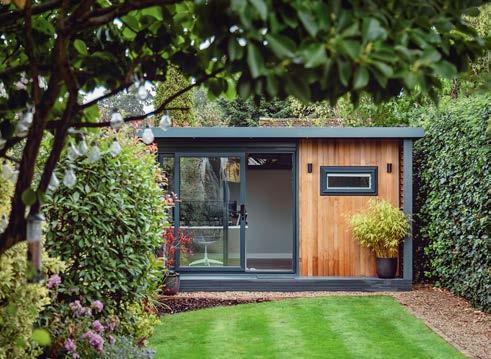
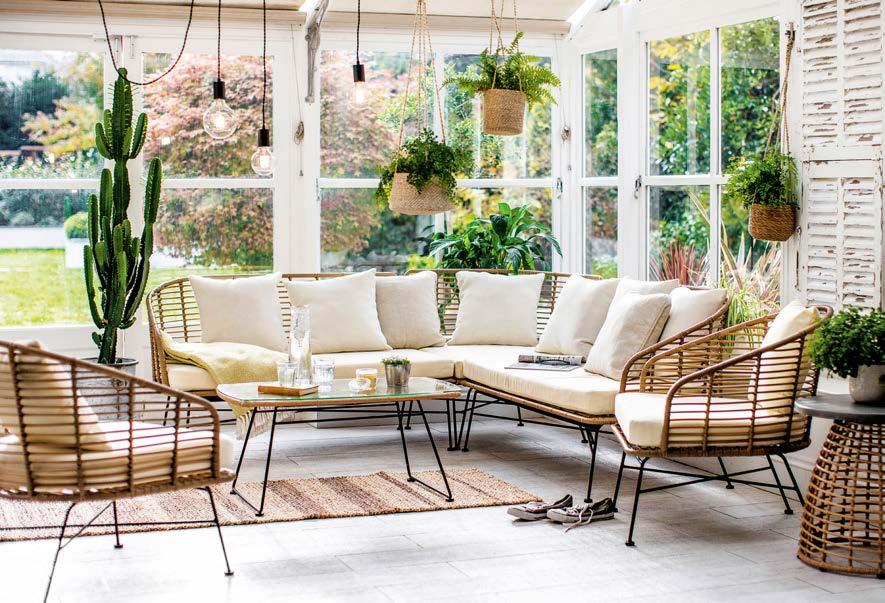
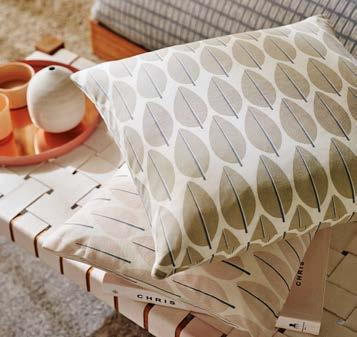
ABOVE Take cues from nature with a leaf pattern in pretty hues. Cushions in Lazza, £22 a metre, iLiv LEFT Outdoor furniture can be used indoors for a lightweight look. Corner sofa, £1,250, and all other furniture, Hampstead collection, Garden Trading BELOW Interior designer Katharine Pooley has created year-round comfort with floorlength curtains and a variety of lighting. BELOW LEFT Indulge in a comfortable armchair covered in a vibrant floral fabric. Dakota armchair in Szekely Folk, £1,500, Mind The Gap
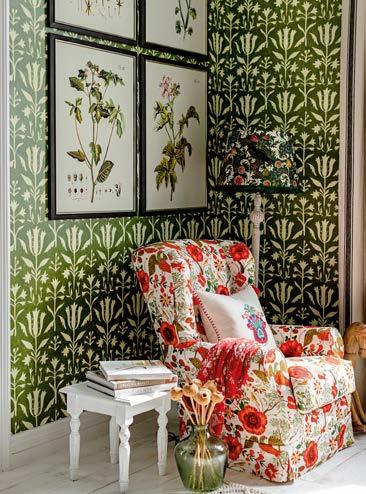
Style Notes
• Woven furniture is a natural natural choice for garden rooms • Consider armchairs or sofas if a garden room is to be used throughout the year • Indoor-outdoor fabric offers versatility and practicality, being water-resistant and less liable to fade in direct sunlight
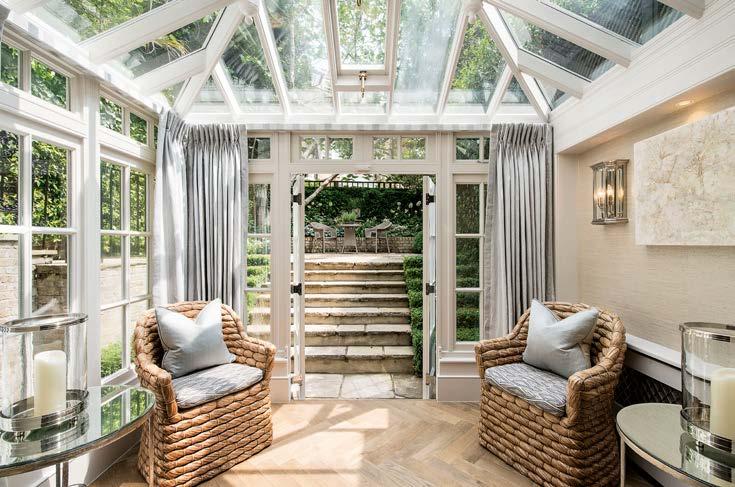
FURNITURE
A natural choice would be furniture that can be used indoors and out, perhaps to take onto a patio when the weather is fine and extra seating is needed.
Woven furniture such as rattan is a popular choice in this case. Aesthetically it works well with a verdant backdrop and, being light, can easily be taken outdoors, where it will not jar visually with any other outdoor furniture. Lightweight metal furniture offers similar advantages, particularly for dining tables.
“Furniture choices such as wicker and rattan will work well and give the space its own identity, drawing up an earthy theme to differentiate from other living spaces,” says Pooley. “Use wooden accents and foliage to accentuate this look, or consider more modern styles if you’re after a more contemporary feel.”
Removable seat-pads and cushions, perhaps covered in attractive and practical indoor-outdoor fabrics, are also an option. These types of fabrics are designed to be stain, mildew and water-resistant, and have better light-fastness than indoor fabrics, therefore less likely to fade in direct sunlight – an obvious boon in extensively glazed rooms. Traditional conservatory or garden furniture is not the only option for a garden room; conventional indoor furniture can work equally well, particularly in heated rooms used yearround. Sofas and armchairs are a must if the room is to be used, not just for an occasional cup of tea, but for significant periods of time. To lighten the look, add side tables or a bench in rattan or consider a statement wicker rocking chair. For those utilising the space as a sunroom, a sun lounger might also be a nice touch, offering the option for some serious relaxation. n






